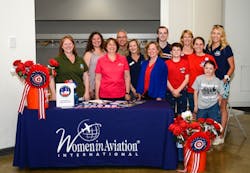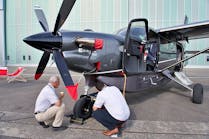WAI Members and Friends #HonortheWASP Who Have Flown West
There was some sadness in the visits as well. One woman, having visited a rural cemetery wrote, “I found her gravesite to be a little sad. It’s a tiny place, not well maintained. And though they had flags on the veterans’ graves, she did not get one (until I put my mini-flag there).” Those sad moments, though, were balanced by another visit where the gravestone of Texas WASP Lillian Moore Conner’s husband which faces hers was engraved with this message: “Ah Lillian, How We Used to Dance!” The couple who visited WASP Mary Elizabeth Trebing’s grave in Boulder, Colorado, reported that she died, aged 23, in a forced landing during a ferry flight, and added, “She rests now with her mom and dad in a very peaceful place, under the trees.” One WAI member summed up the #HonorTheWASP experience by saying, “It was a privilege to participate.”
To view these memorable photos and videos from the 2019 Memorial Day Weekend search #WomeninAviation #HonorTheWASP on Facebook, Twitter, Instagram, and YouTube. To access the nationwide database of WASP final resting places visit http://bit.ly/2019WAIHonorTheWASP.
The Women Airforce Service Pilots (WASP) were inducted into WAI’s International Pioneer Hall of Fame in 1993. The WASP was formed in August of 1943 as an adjunct to the Army Air Forces' war effort. The organization was made up of two civilian-flying groups: the Women's Auxiliary Ferrying Squadron and the Women's Flying Training Detachment. Under the guidance of Jacqueline Cochran, the WASP became involved in all aspects of military flying operations, with the exception of combat and overseas ferrying. More than 1,000 WASP pilots flew over 70 million miles and delivered 12,650 airplanes across the country during their time of operation. The WASP program was suspended in December 1944.



